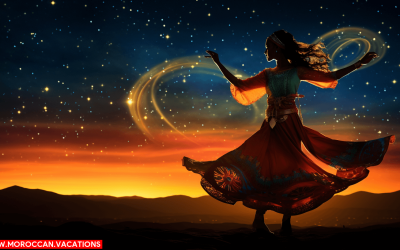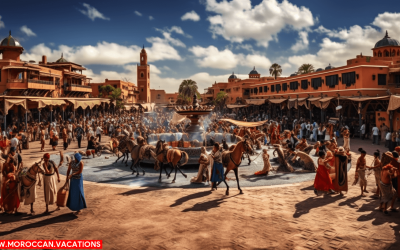The History of Moroccan Carpets
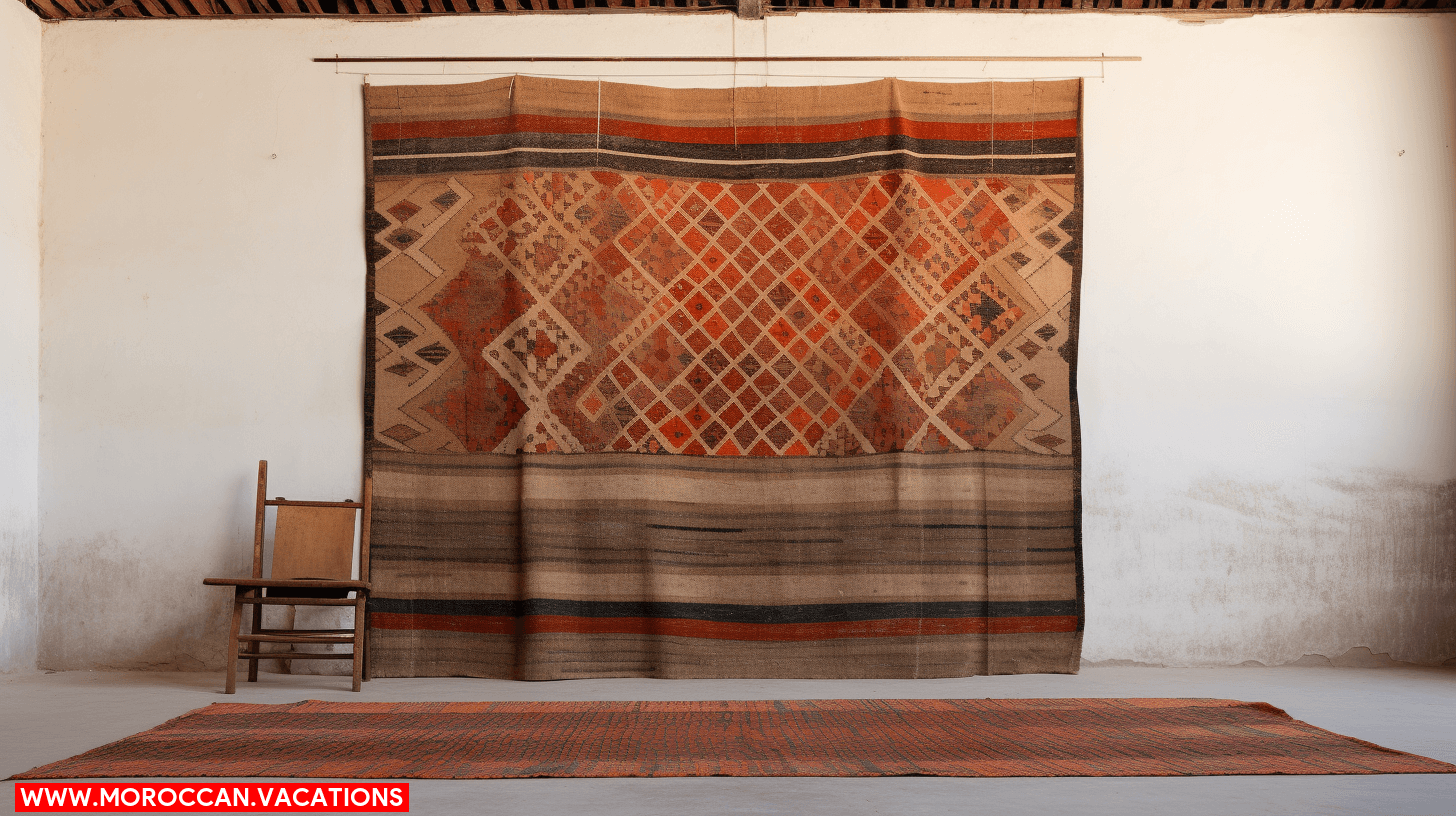

Ever wondered how those stunning Moroccan carpets are made? Well, you’re about to discover the secrets behind this ancient craft. You’ll delve into the history, techniques, and symbolism woven into these masterpieces. You’ll meet the Berber women who’ve passed down these skills for generations. So, sit back, relax and let’s uncover the colorful threads that make up the rich tapestry of Moroccan carpet weaving. It’s more than just a rug, it’s a testament to a culture’s resilience and artistry.
In your journey to understand traditional Moroccan carpet weaving, you’ll find its roots deeply embedded in the rich history of Morocco. The carpet trade routes were not just paths for the exchange of goods, they were essentially lifelines that carried culture, art, and tradition across vast and varied landscapes.
Through the centuries, these routes have been the highways on which influential dynasties imposed their styles, techniques, and materials. The Almoravids, Almohads, and Merinids, just to name a few, have each left their mark on the craft. But, it’s not just about the influence of the powerful. The heart of Moroccan carpet weaving lies in the hands of the Berbers – the indigenous people who’ve passed down their skills from generation to generation, evolving with the times but never losing their essence.
Understanding Moroccan Carpet Weaving Techniques
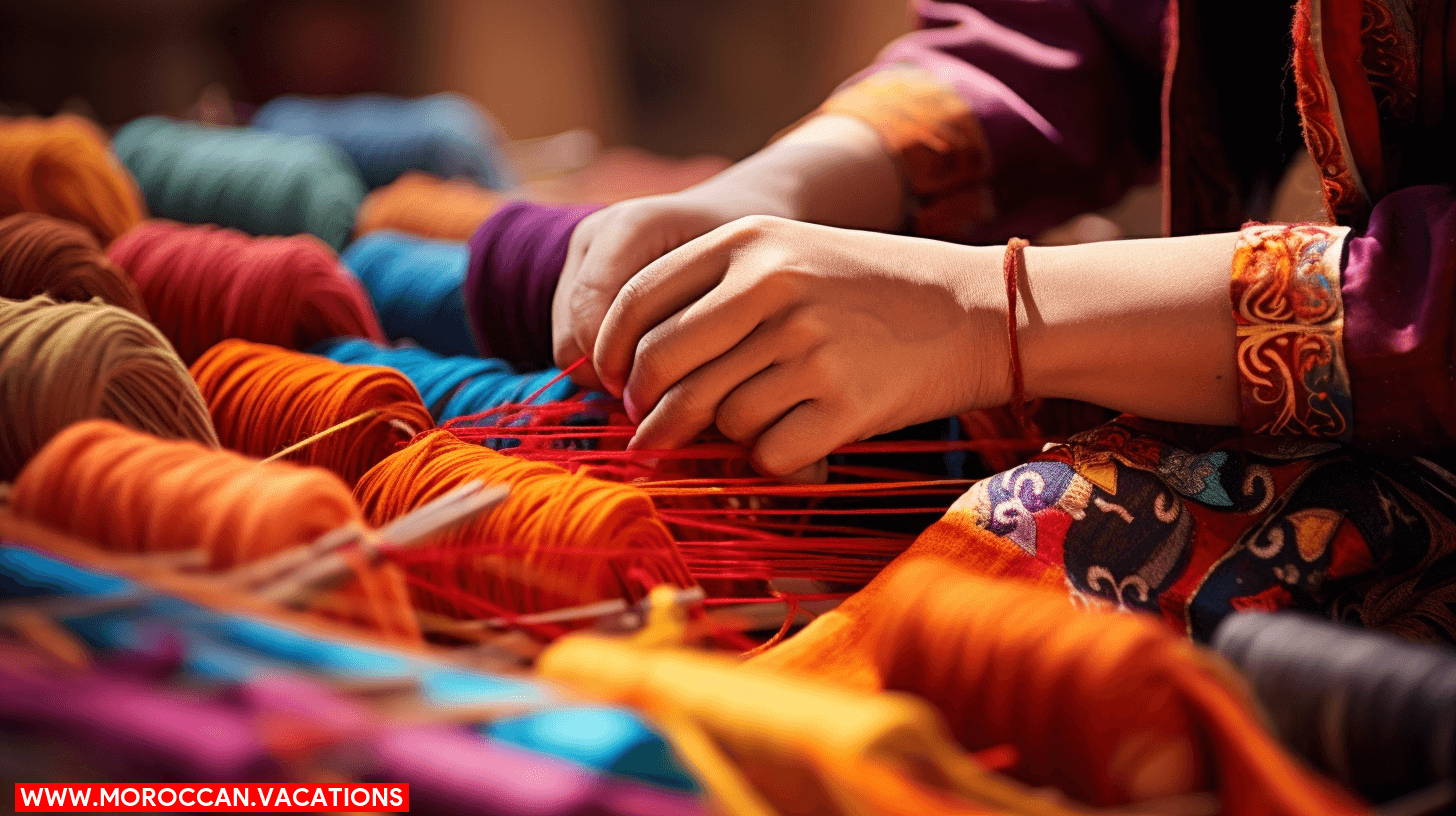

Now that you’ve got a grip on the history, let’s delve into the actual techniques used in Moroccan carpet weaving, the heart of this age-old tradition. You’ll find that these techniques are a testament to the ingenuity and creativity of the Moroccan people, and they play a significant role in the cultural impact of these unique pieces.
- Knotting: This is the most common technique, requiring meticulous attention to detail. Each knot is tied individually, allowing for intricate patterns and designs.
2.Flatweaving: A quicker, less labor-intensive method. It doesn’t allow for complex designs, but it’s perfect for creating sturdy, functional pieces.
- Pile Weaving: This technique creates a plush, soft carpet. It’s more time-consuming than flatweaving, but the results are worth it.
But it’s not all about the techniques. Weaving innovations have been instrumental in keeping this tradition alive and thriving. Modern weavers have found ways to incorporate new materials, designs, and color palettes while maintaining the traditional techniques. This blend of old and new has helped Moroccan carpet weaving maintain its relevance and appeal, despite the rapid changes in the world around it. You’re not just looking at a carpet, you’re witnessing a piece of living history.
Symbols and Meanings in Moroccan Rugs
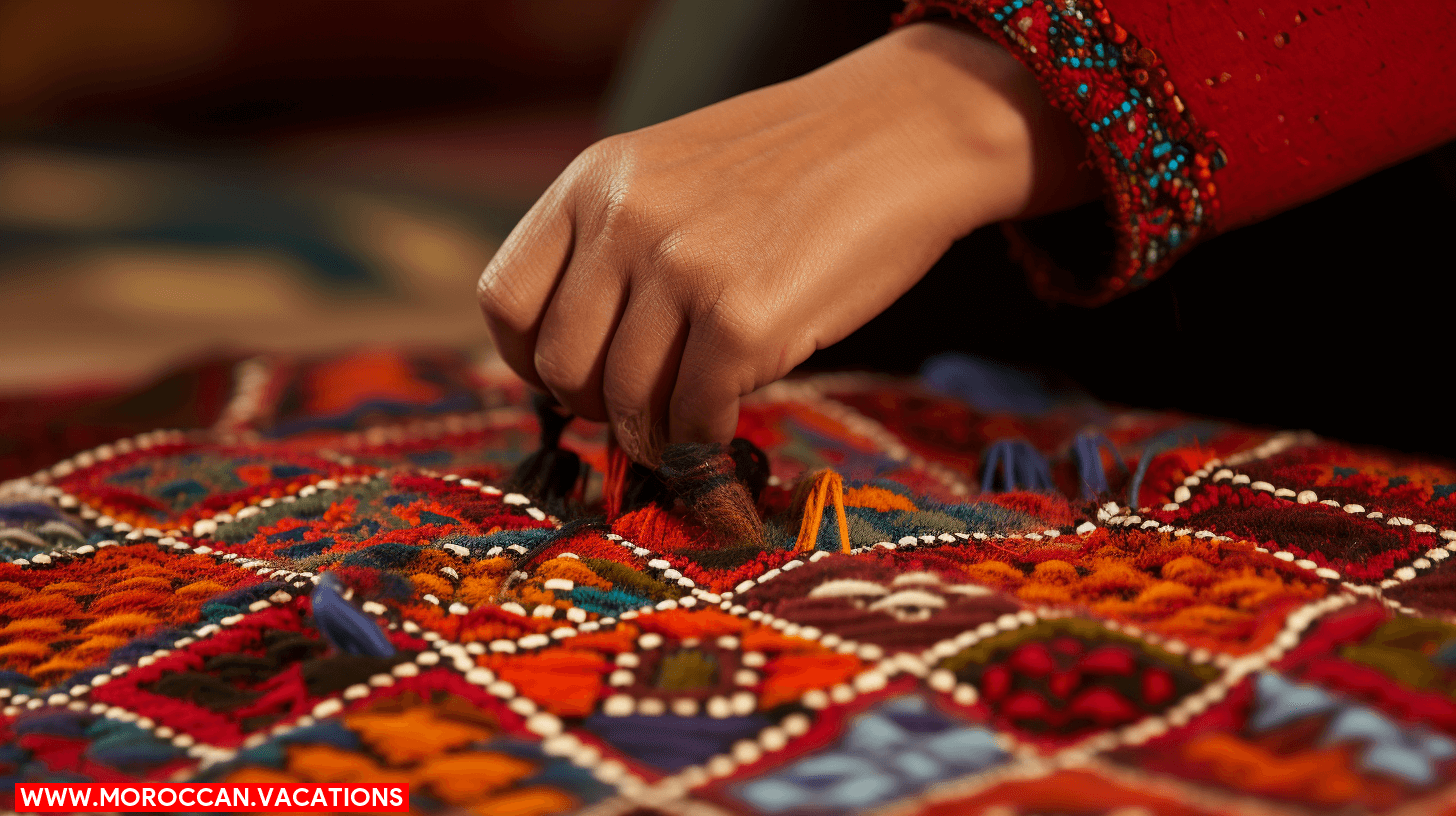

While you may appreciate the beauty and craftsmanship of Moroccan rugs, it’s the symbols and meanings woven into each piece that truly tell a captivating story. These rugs aren’t merely ornamental fixtures; they’re cultural expressions, imbued with rug spirituality, expressing the life and times of the weaver.
Each symbol has a specific meaning, telling tales of birth, protection, strength, and femininity. They’re a form of unspoken language, a way for the weaver to share her emotions, experiences, and beliefs.
Here’s a simple breakdown of some common Moroccan rug symbols:
| Symbol | Meaning |
| Diamond | Protection and fertility |
| Zigzag | Water, life and continuity |
| Triangle | Femininity and motherhood |
| Cross | Faith and hope |
The Role of Berber Women in Weaving
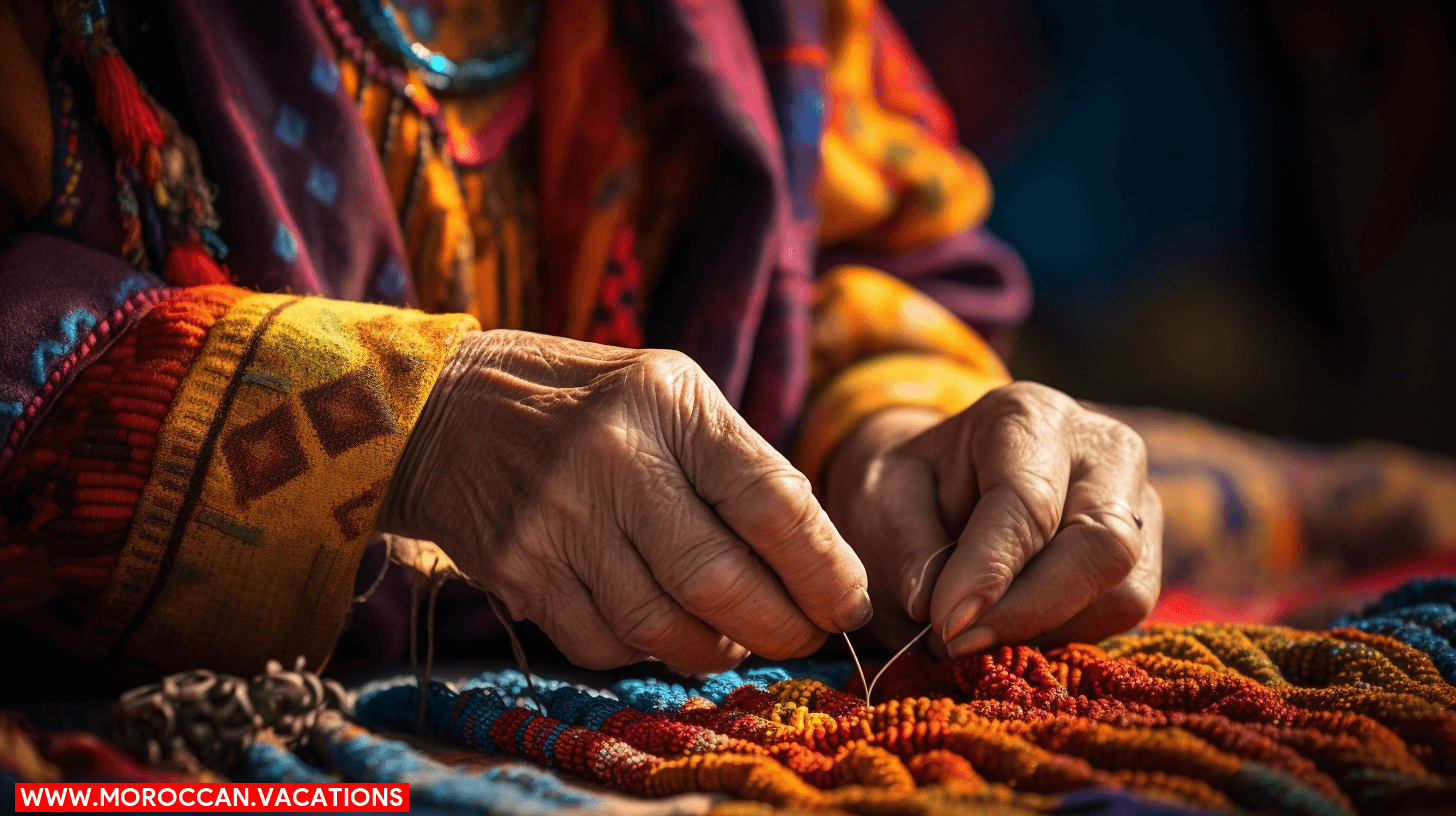

Understanding the role of Berber women in weaving, you’ll see it’s not just about creating beautiful rugs, but also a significant aspect of their cultural identity and economic independence. We’re talking about a tradition passed down through generations that serves as a vessel for Berber empowerment and weaving literacy.
- Berber Empowerment: Women hold an elevated status in Berber society due to their weaving skills. They’re not just weavers; they’re custodians of an age-old tradition, which gives them a unique standing. Their creations are not only aesthetic masterpieces but also tangible representations of their cultural identity.
- Weaving Literacy: Berber women are weaving tales, each rug narrating a story. Their literacy isn’t just about reading and writing, it’s about understanding the language of their craft. Every knot, every color has meaning, reflecting the weaver’s experiences and emotions.
- Economic Independence: Through their craft, Berber women have gained financial independence. Selling their rugs allows them to contribute to their families and community, reinforcing their important role in society.
Materials Used in Moroccan Carpet Weaving
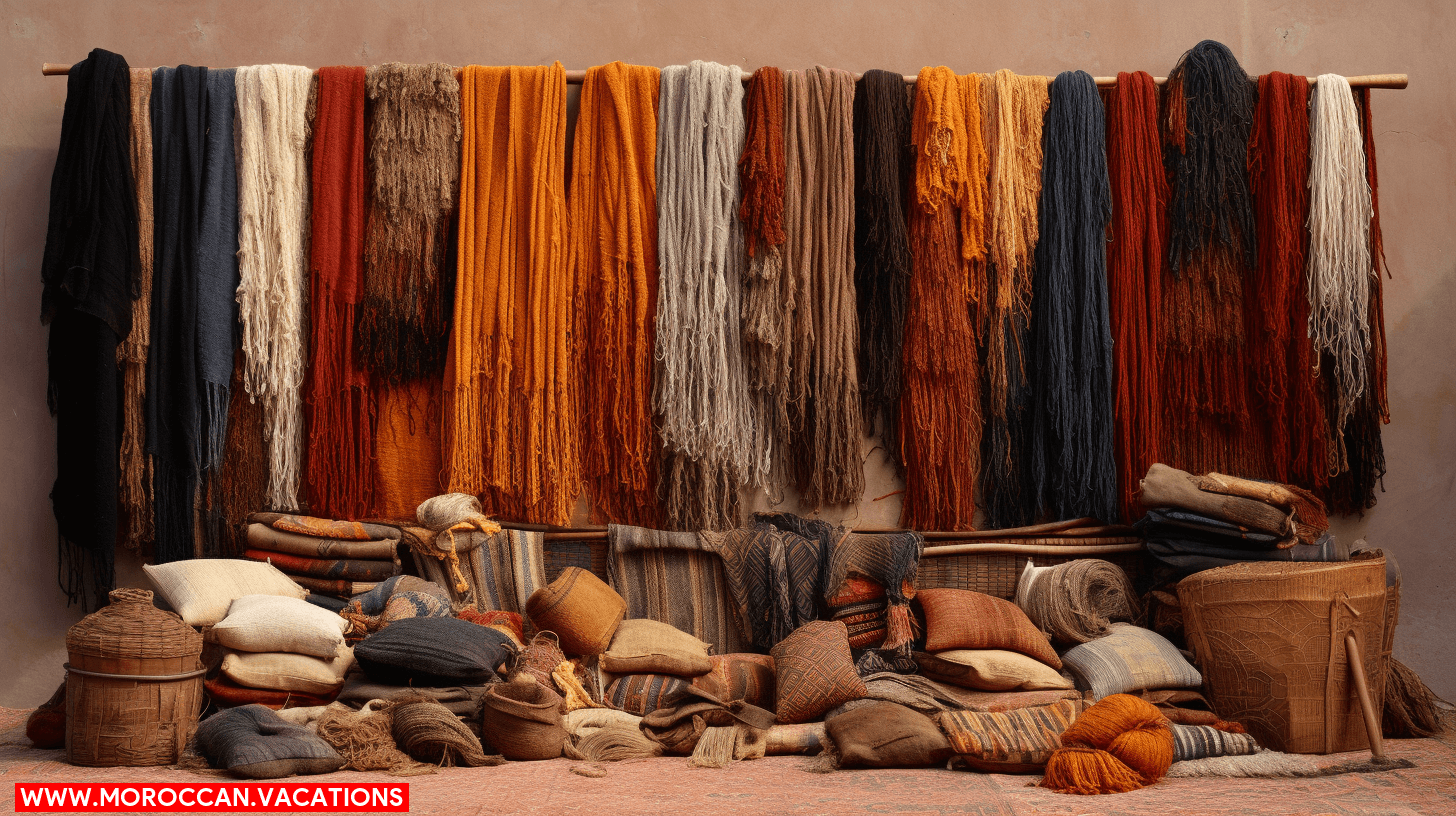

In spite of the intricate designs you see on Moroccan carpets, you’d be surprised to learn that they’re crafted using just a few basic, yet high-quality materials. Wool, cotton, and sometimes silk form the core of these exquisite creations. The choice of material varies depending on the region, with wool being the most widely used due to its availability, durability, and ease of dyeing.
Speaking of the dyeing process, it’s an art in and of itself. Natural dyes derived from plants, minerals, and even insects are used to create the vibrant hues you see in Moroccan rugs. Berber women, the master crafters, have inherited age-old dyeing recipes that they tweak to produce a wide spectrum of colors.
Now, let’s touch on carpet maintenance. Moroccan carpets are renowned for their resilience. However, their durability doesn’t mean they’re maintenance-free. Regular vacuuming, rotation, and professional cleaning every few years will keep your carpet in impeccable condition. Avoiding direct sunlight also prevents color fading.
Geographical Influences on Carpet Designs
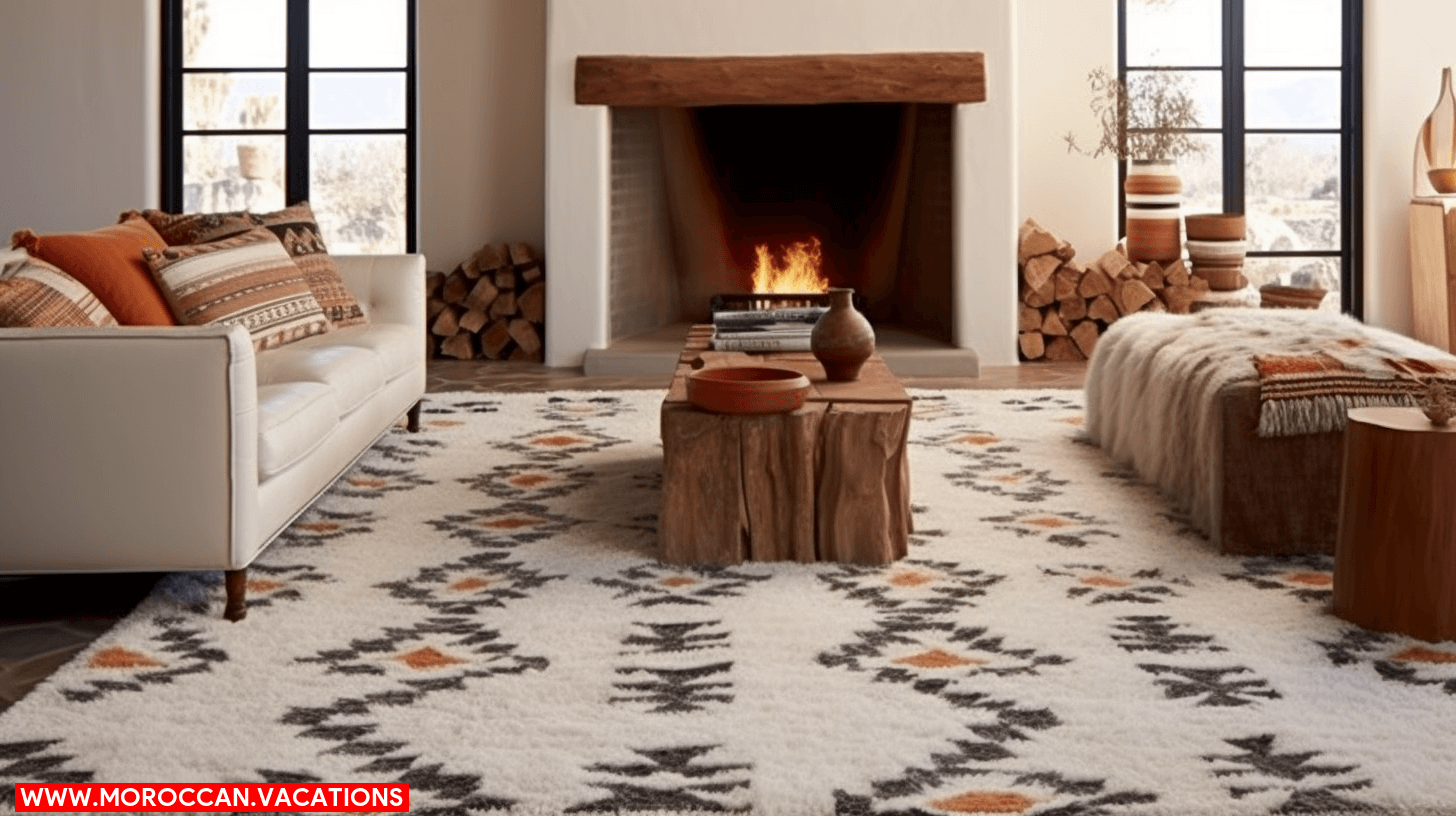

Although you’ve now grasped the importance of materials and maintenance in Moroccan carpet weaving, you’ll find that the geographical location of the weavers plays a pivotal role in the distinct designs you see on these carpets. Here’s how:
- Carpet trade routes: These routes historically established connections between different regions, introducing diverse artistic influences. The designs you see on each carpet are a blend of these influences, each telling a story about the weaver’s interaction with various cultures.
- Geographical features: The natural scenery directly impacts the weavers’ design inspiration. You’ll find carpets from mountainous regions featuring geometric patterns, mimicking the harsh, rugged terrain. On the flip side, carpets from the plains often have softer, flowing designs.
- Rug storytelling: Each rug is a canvas for the weavers to express their life experiences. The designs often symbolize local legends, personal experiences, and tribal histories.
The geographical influence on the designs isn’t just about aesthetics. It reflects a deeper, more profound connection between the weaver, their environment, and their cultural interactions. It’s freedom in its purest form, a tangible manifestation of the weaver’s artistic liberty.
The Significance of Colors in Moroccan Rugs
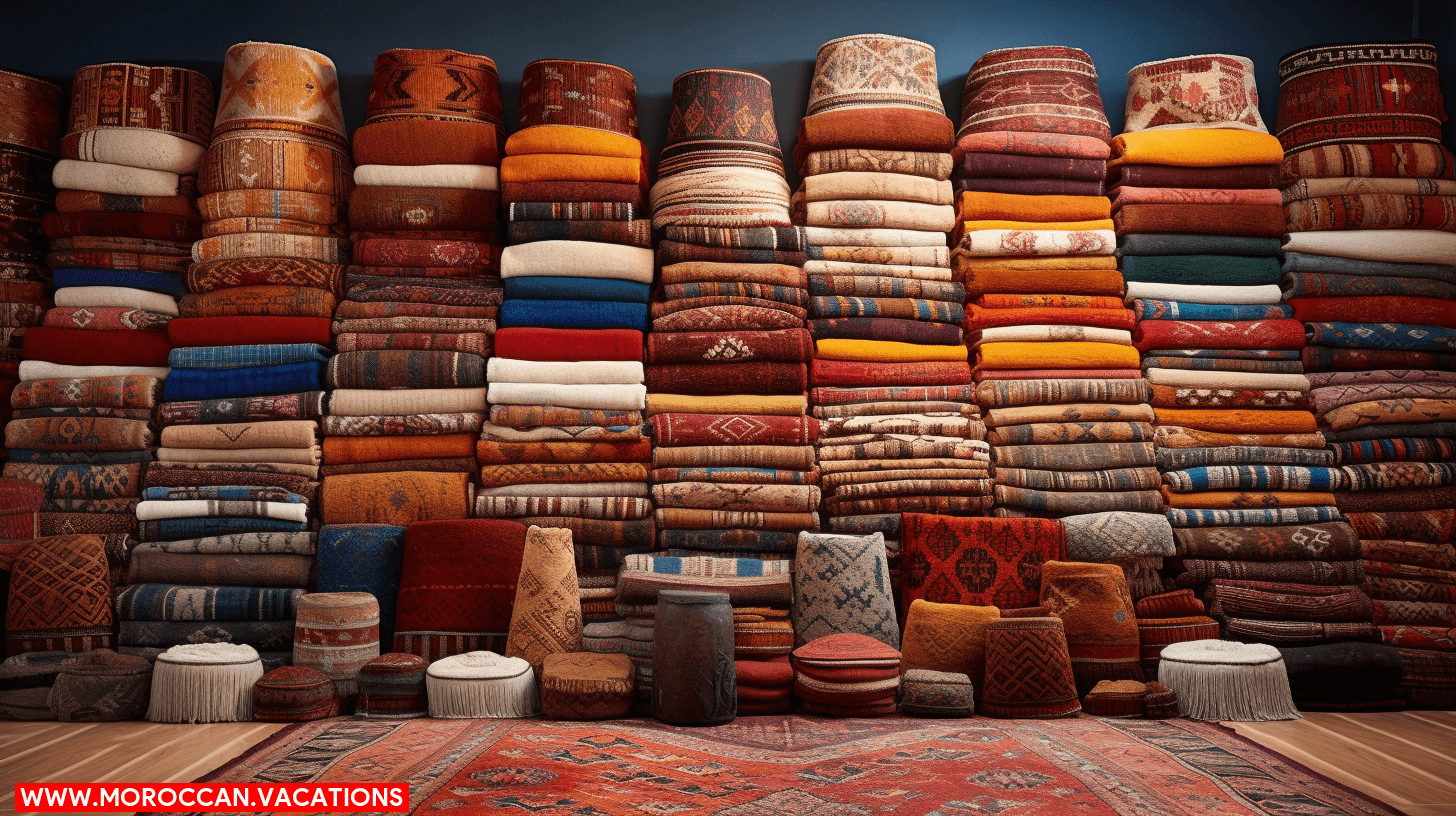

You’ll find that the colors used in Moroccan rugs aren’t just for decoration—they carry deep cultural and symbolic significance. Each hue is carefully chosen to tell a story, to express a thought, or to share an emotion. This is the essence of color symbolism in these traditional rugs.
The reds you see represent energy, strength, and passion—a nod to the vibrant spirit of the Moroccan people. The blues, on the other hand, symbolize peace, heaven, and water—elements that echo the tranquility of Moroccan coastal towns. Browns and blacks often depict the earth and the universe, reflecting the people’s deep respect for nature and the cosmos.
Delving deeper into rug aesthetics, the combination of these colors also matter. A dominant red with specks of blue could represent a strong spirit tempered by peace, while a primarily blue carpet could mean a life lived in tranquility. It’s not just about their visual appeal—it’s about their ability to speak without words, to share stories that have been passed down through generations.
In essence, the colors in a Moroccan rug are not just colors—they’re symbols, they’re stories, they’re the heart and soul of a culture.
The Market for Traditional Moroccan Carpets
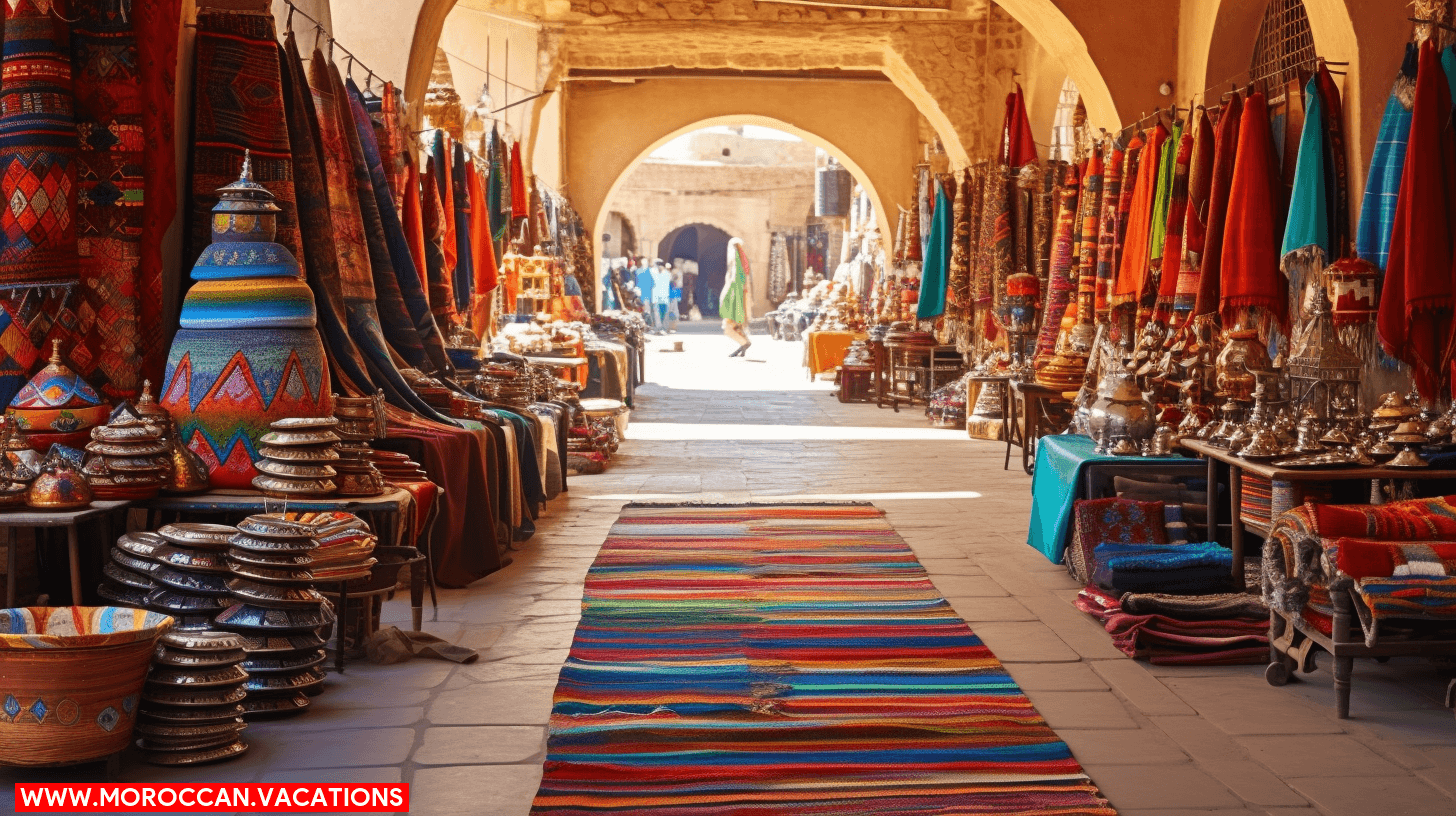

Diving into the marketplace for traditional Moroccan carpets, you’ll find a thriving global demand for these hand-woven pieces of art. However, you might also encounter certain challenges.
- Carpet Valuation Trends: As with any art form, the value of these carpets fluctuates. You’ll notice a surge in prices for older, rarer pieces, while newer ones remain relatively affordable.
- Export Challenges: Despite the demand, exporting these carpets isn’t always smooth sailing. Issues can range from complex customs regulations to shipping costs, and these can considerably affect the market.
- Public Perception: The value of these carpets isn’t just determined by age or rarity, but also by public appreciation for the craftsmanship involved.
So, what does this mean for you? If you’re a collector, you’ll need to keep an eye on valuation trends and be prepared for potential export challenges. If you’re an artist or artisan, you’ll need to find ways to highlight the value of your work beyond simple age or rarity.
The Preservation of Moroccan Carpet Weaving
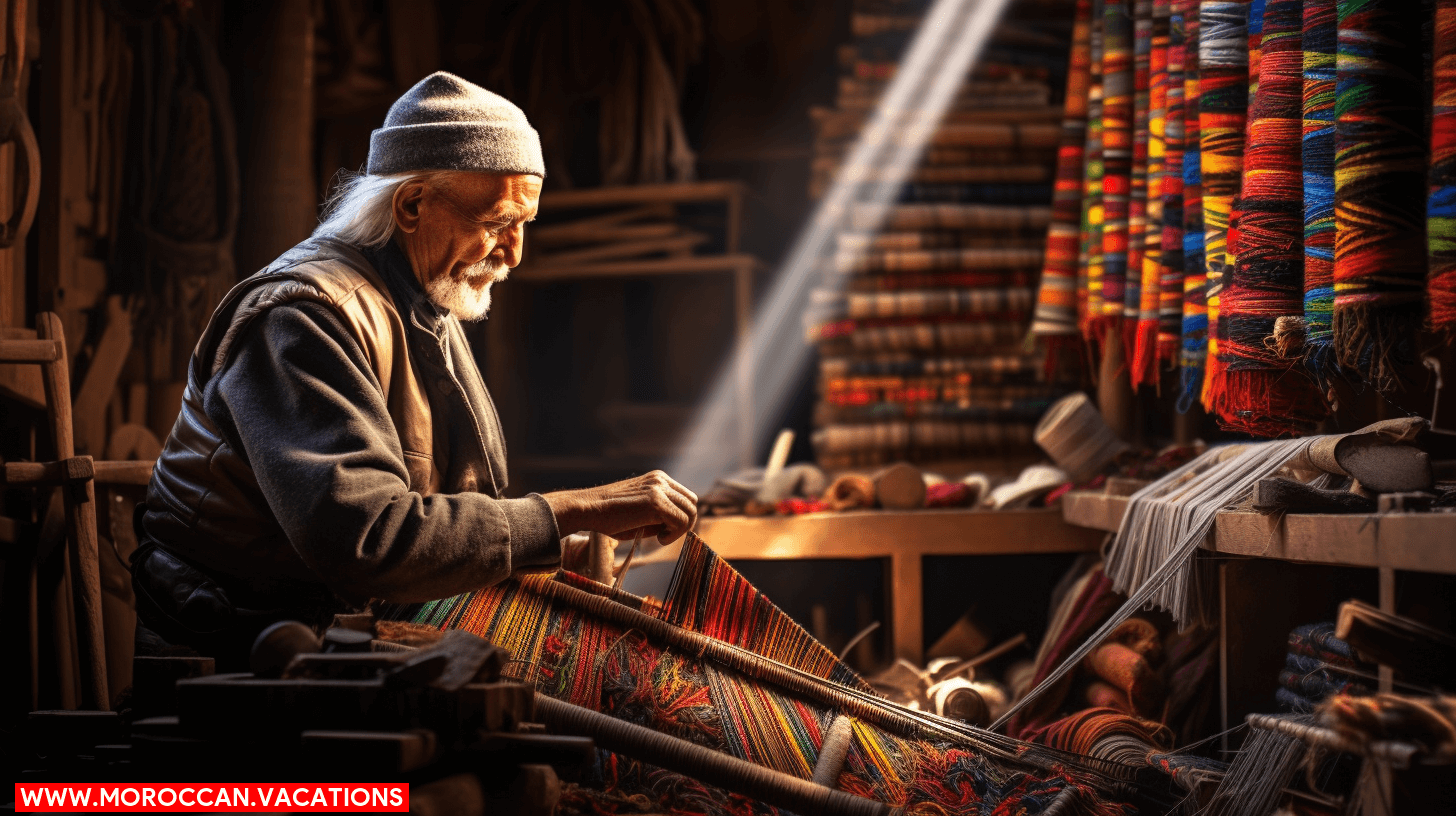

Over time, preserving the traditional art of Moroccan carpet weaving has become a significant focus, ensuring that its unique craftsmanship continues to captivate the world. You’d be amazed at how much this age-old practice impacts the Moroccan economy. It’s not just about creating beautiful rugs; it’s also about sustaining livelihoods and communities.
The government plays a crucial role in the preservation of this art. They’ve acknowledged that it’s more than just a tradition; it’s a vital part of Morocco’s cultural identity and economic stability. As such, they’ve taken steps to safeguard it. They’ve instituted programs for training weavers, promoting fair trade practices, and maintaining quality standards.
But the battle isn’t just on the official front. It’s also happening in homes and workshops across Morocco. Every time a weaver sits down at a loom, they’re not just making a carpet; they’re preserving a part of Morocco’s soul. So, when you buy a Moroccan carpet, you’re not just purchasing a decorative piece. You’re supporting an ancient tradition and a resilient economy. Let’s treasure this art and keep the weaving looms of Morocco alive.
Modern Adaptations of Traditional Weaving Techniques
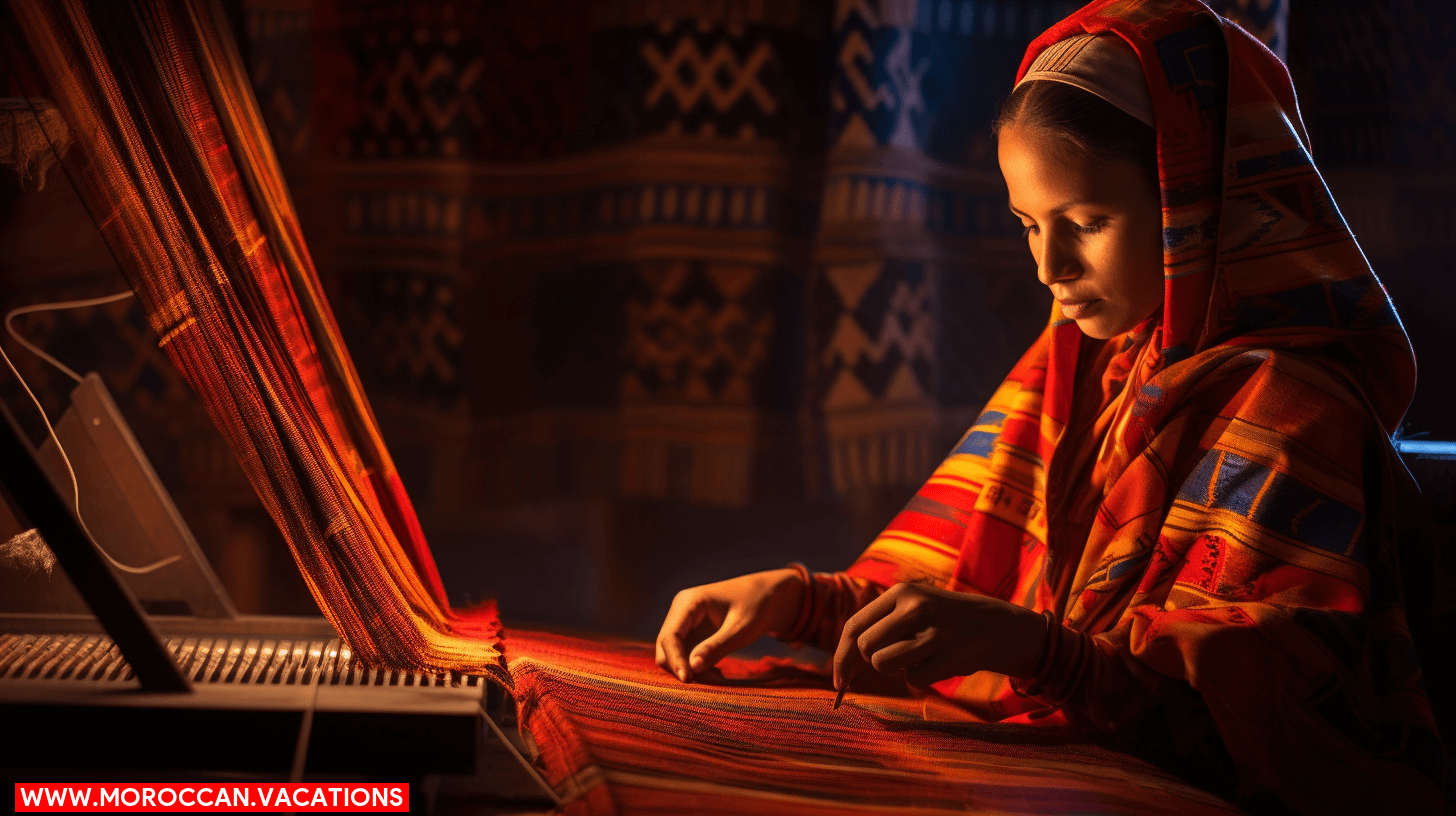

As you explore the world of Moroccan carpets, you’ll soon discover that while the traditional techniques remain central, they’ve been cleverly adapted to fit into the modern market. The influence of weaving machinery and the impact of globalization have spurred a fascinating evolution.
- Weaving machinery influence: Modern looms, while maintaining the essence of traditional methods, speed up the process and allow for more intricate designs. They’ve provided a unique blend of old and new, without compromising the craft’s authenticity.
- Globalization impact: Global markets have opened up, introducing Moroccan carpets to a wider audience. This exposure has led to a fusion of styles and techniques, resulting in an interesting array of hybrid carpets that still retain their Moroccan identity.
- Freedom in design: Modern adaptations have given weavers the freedom to experiment with designs, colors, and materials. This creative liberty has led to the birth of carpets that are a testament to the weaver’s imagination and skill.
The beauty of Moroccan carpets lies not just in their tradition, but also in their adaptability. As you delve deeper, you’ll appreciate how these modern adaptations have enriched, not eroded, this time-honored craft.
Introducing Ayoub Karbachi, a brilliant wordsmith and curator of the Moroccan Vacations website. Prepare to immerse yourself in mesmerizing narratives and extraordinary moments, as he unveils the allure of Morocco's captivating destinations like never before.
Related Articles
Unraveling the Grace and Rhythm of Traditional Moroccan Dance Styles
Explore the mesmerizing world of traditional Moroccan dance styles, as we unravel the grace and rhythm deeply rooted in cultural heritage. Discover the vibrant movements and rich history behind these captivating dances.
The Rich History of Traditional Music and Dance Performances in Marrakesh
Explore the vibrant tapestry of Marrakesh’s cultural heritage through our immersive guide to traditional music and dance performances. Uncover the rich history and captivating rhythms that have shaped the soulful expressions of this enchanting Moroccan city.

